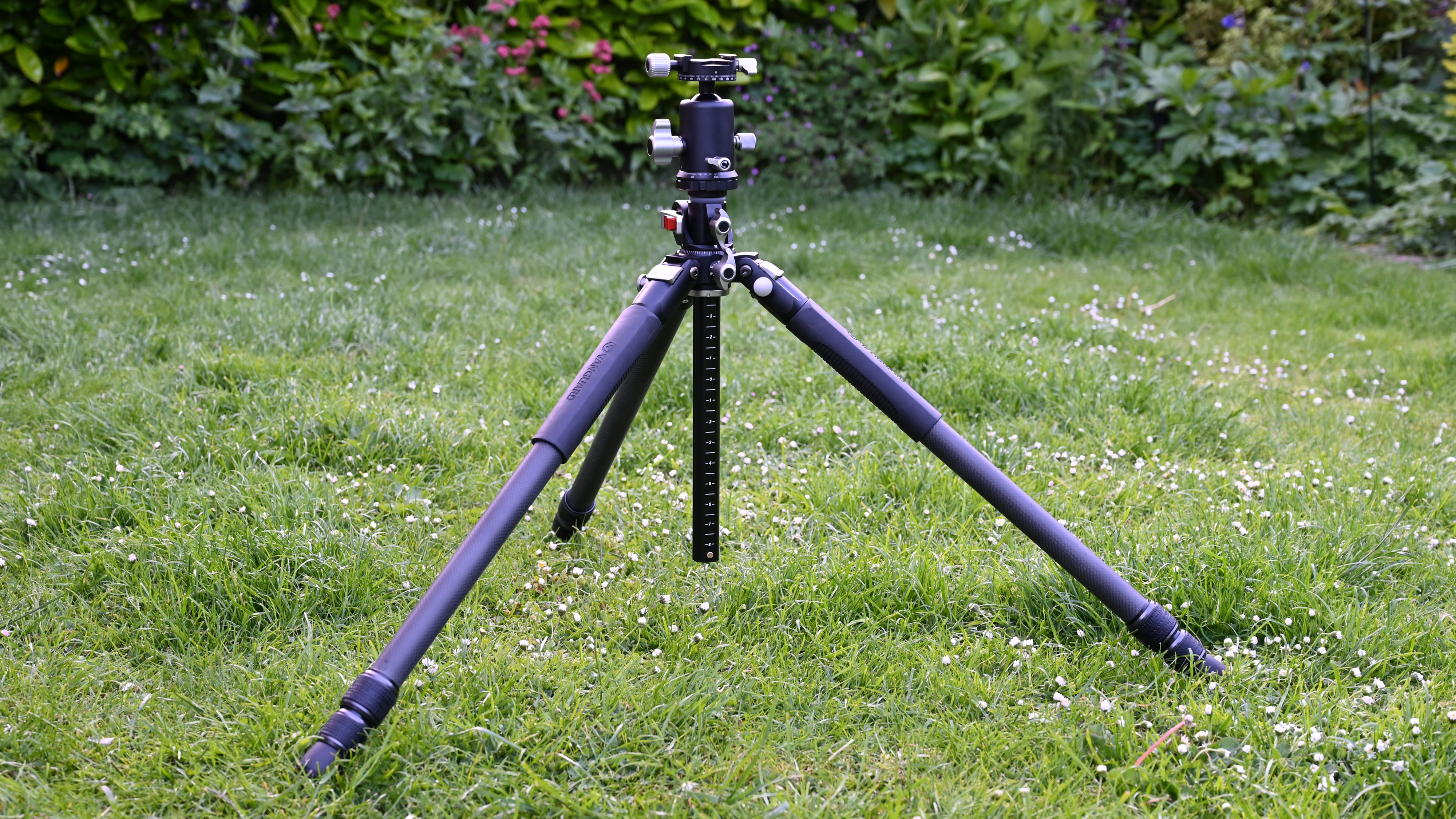
The Vanguard VEO 3+ 303CBS is a full-sized carbon fiber tripod kit that comes complete with a heavy-duty ball head and a neat range of included accessories. Vanguard might not be the name that first springs to mind when you think of tripods but the company has actually been making them for nearly 40 years, earning itself a solid reputation along the way. And speaking of solid, the 3+ series is claimed to be Vanguard’s most stable tripod to date, with three-section legs, the outer section being 30mm in diameter.
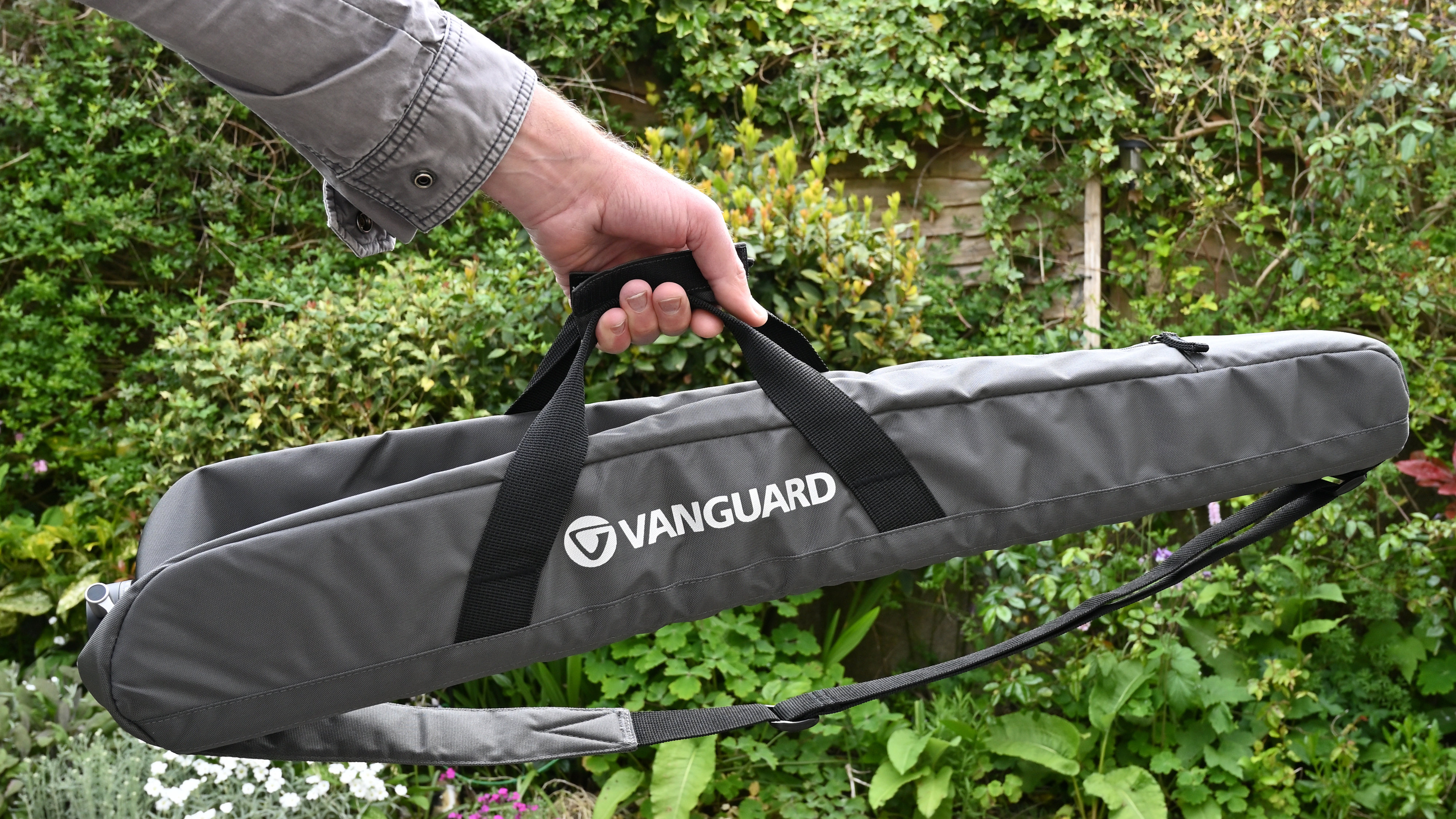
The VEO 3+ series of tripods is available in both carbon fiber and aluminum options, the latter naturally being heavier but shaving around £100/$100 off the purchase price. Being ‘full-sized’ rather than a ‘travel tripod’, it doesn’t have swing-up legs to reduce the stowage size, an upside being that it’s quicker to set up for use, and it has a loftier maximum operating height than pretty much any travel tripod.
With solid dependability at its core, the Vanguard goes into direct competition with tripods like the Manfrotto 055CXPRO3, which has a similar outer leg section diameter of 29.2mm. The Manfrotto’s maximum load rating is 20kg and it’s often paired with the Manfrotto XPRO Ball Head with Top Lock, which has a load rating of 15kg. The Vanguard kit is rated at 25kg for both legs and ball head. For price comparison, the Manfrotto outfit costs about 10 per cent more in the UK, but the best part of twice as much in the USA.
Specifications
Material: Carbon Fiber
Folded height: 79cm
Maximum operating height: 177cm
Minimum operating height: Ground level
Pivot center column: Yes
Weight: 2.6kg
Load rating: 25kg
Sections per leg/center column: 3 / 1
Maximum leg section diameter: 30mm
Locking leg angles: 3
Feet: Pads and spikes
Case/bag included: Padded case
Key features
Considering that any tripod kit basically includes a set of legs and a head, the feature set is often fairly limited. Not so in this case, as the Vanguard packs in as many features as you can probably imagine, and maybe a few more besides. Built for stability at the expense of extra stowage size and weight, the legs kick off in a fairly conventional way. As such, there are only three sections in each leg and the sections are quite long, while the center column has a one-piece design with no telescoping inner section. That’s good news in that each joint for additional sections is a potential weak point that can make a tripod more susceptible to flexing and vibrations, and the long leg sections enable a lofty maximum operating height of 177cm with the center-column fully extended.
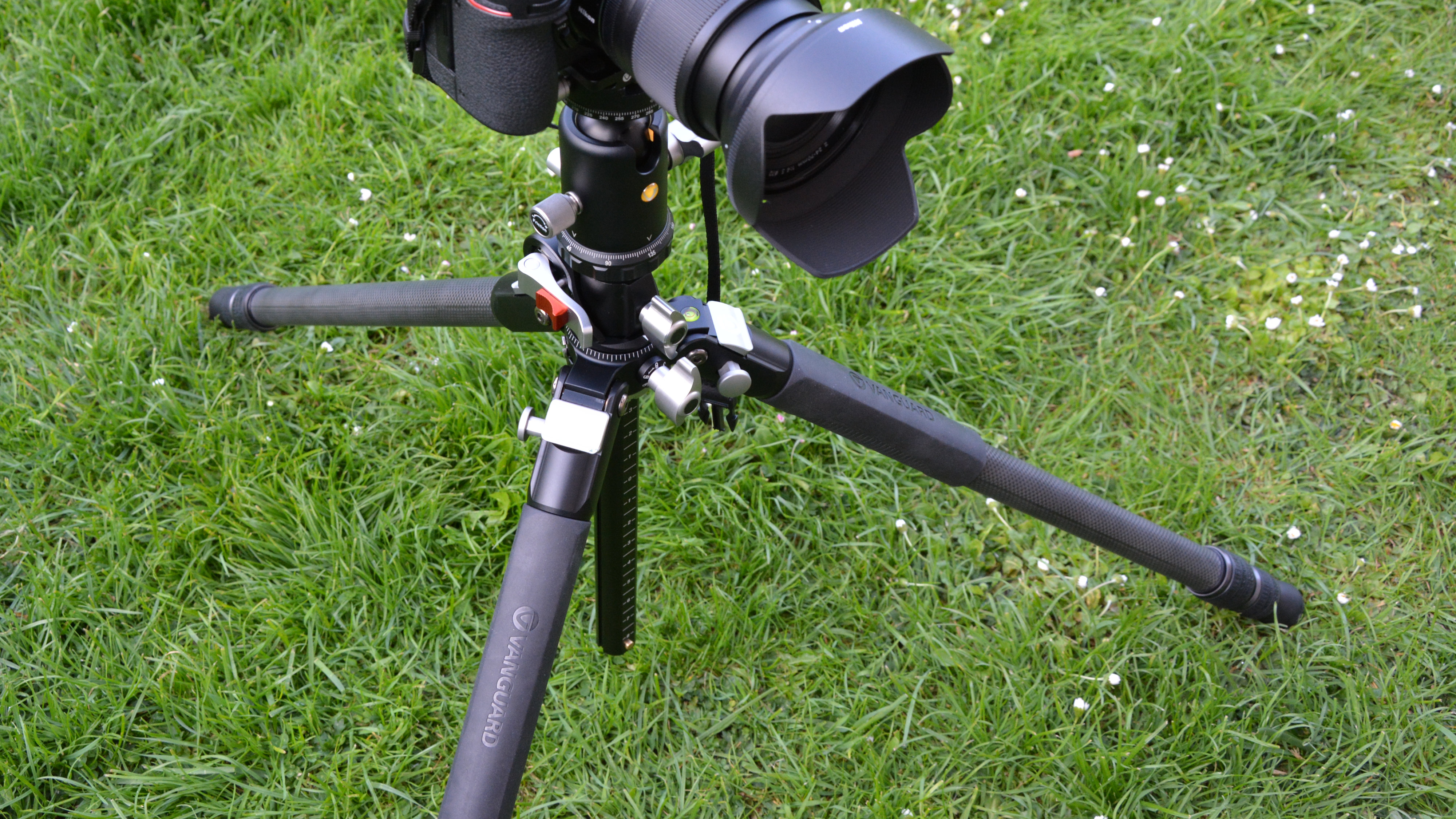
The leg sections have twist-grip clamps, which are often favored nowadays compared with flip locks. As is often featured in recent tripods, the legs can be locked at three different angles, helping to reduce the minimum operating height while improving low-level stability. Alternative leg angles also help when shooting on uneven terrain or working around obstacles.

Despite the legs being made from carbon fiber rather than cold-to-the-touch metal, two of them feature comfort padding around the top sections, which is a little uncommon nowadays. A bubble level is also featured on the platform above one of one of the legs, to aid easy levelling.

If you extend the center column to its maximum height, it can pivot through a complete arc of 180 degrees, with multiple lockable angles along the way. This can be great for macro photography and when using ultra-wide-angle lenses, helping to avoid the tripod feet creeping into the picture. It’s worth pointing out that the broadly similar Manfrotto 055CXPRO3 also has a pivoting center column, but that one can only be used in either vertical or horizontal configuration.
Up on top, the full VEO 3+ 303CBS kit comes complete with a VEO BH-250S ball head. A very clever head in its own right, it features Vanguard’s ‘Dual Axis System’ which we’ll come to in the next section, while matching the hefty 25kg maximum load rating of the legs. And for when two heads are better than one, the kit includes a second VEO+ MA1 mount adapter, which enables you to add a second camera or other accessory to the center column.
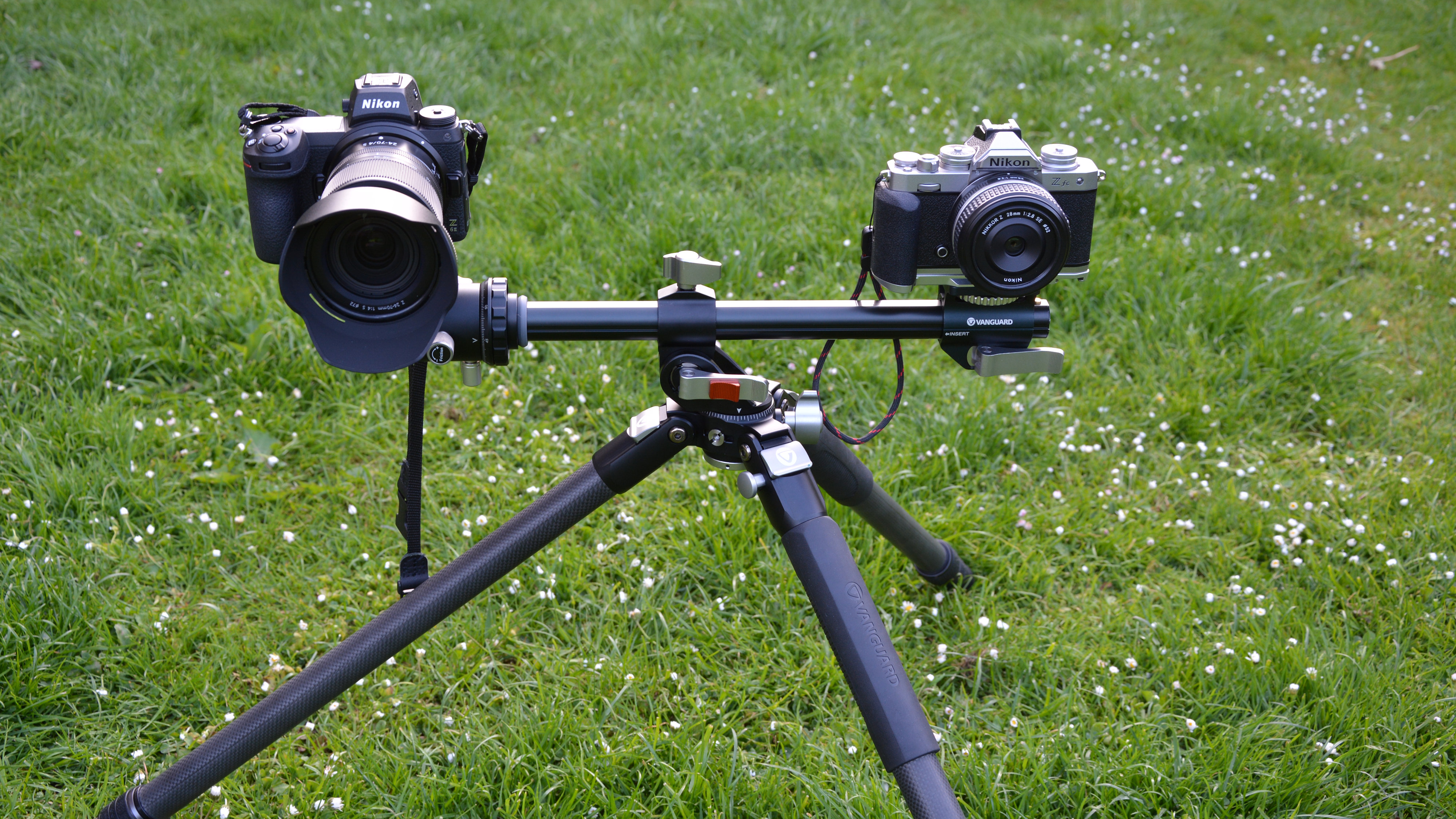
Additional accessories that come free as part of the kit include an Arca-Swiss quick-release plate for the ball head, a screw-in spring-loaded weight hook for attaching to the bottom of the center column, screw-in spikes which can be used instead of the rubber foot pads, a 3/8” to 1/4” thread adapter and two Allen keys for if and when any adjustments are needed. Everything’s wrapped up in a padded carrying case, complete with handles and shoulder strap.
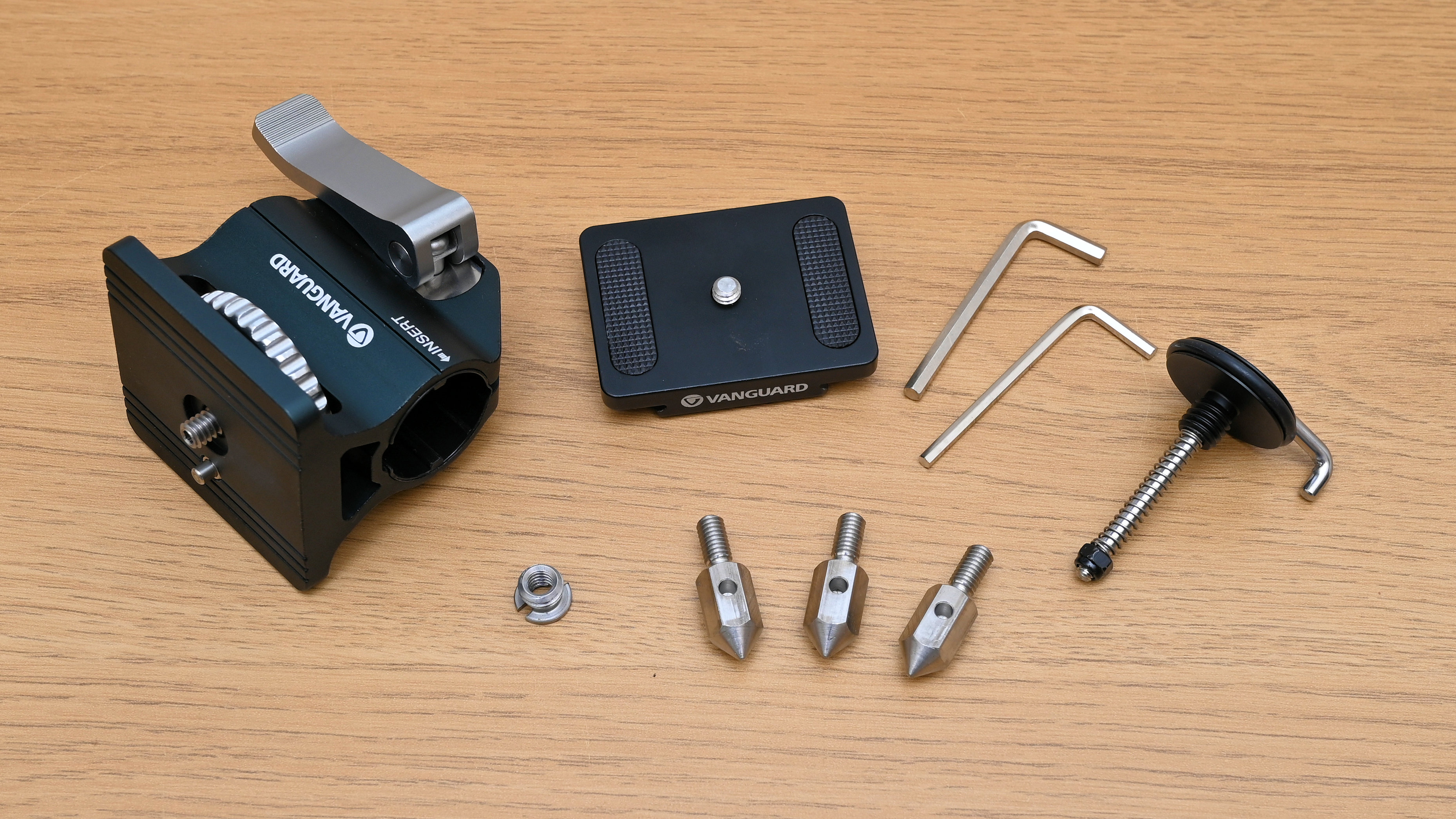
Build and handling
Suffice it to say that build quality looks and feels superb, and of a fully professional-grade standard, from the top of the head right down to the rubber padded feet and optional foot spikes. That’s reassuring given the big maximum load rating and corresponding price of heavyweight cameras and lenses you might be mounting on the tripod.

There’s a lot more to talk about when it comes to handling. A long time back, when I was doing an electronics degree, people who liked fiddling with equipment were called CKTs (Compulsive Knob Twiddlers). There’s little opportunity nowadays, with touchscreen interfaces for everything from cameras to the cars that we drive. The Vanguard redresses the balance with a feast of knobs for making pretty much any and every adjustment you can think of.

The twist locks for the leg sections work simply and effectively, with minimal rotation required for loosening and locking each section. Flip locks are sometimes preferred as they can be easier to clean but, if necessary, the twist locks of this tripod are simple to disassemble, clean and put back together. I actually struggled more with removing the rubber foot pads to swap to the alternative screw-in metal spikes. The rubber pads proved so firmly attached to the legs that I began to think they were glued on, but perseverance paid off, and they’re certainly not going to come loose accidentally. At the top of the leg, simple pushbuttons enable easy selection of the three lockable leg angles.

The platform at the top of the legs includes a bubble level and a pan-release/locking knob. The panning function comes complete with calibrated scale. There’s also a sturdy eyelet on the platform for attaching accessories or a carrying strap, or for hanging a weight from to add ballast for stability. As mentioned earlier, there’s also a spring-loaded weight hook that screws into the bottom of the center column, but you need to remove this if you want to pivot the center column, as well as for adding the additional VEO+ MA1 mount adapter.
Immediately above the pan release/clamp there’s a locking knob for the center column height. A rubber O-ring is fitted to absorb any shock if the center column is dropped back down too quickly. Around the side, there’s a locking lever for pivoting the center column. Compared with some systems, it’s very quick and simple to use. You simply raise the center column to its maximum height and, with the lever released, pivot it through as much as 180 degrees. The center column can lock at various angles throughout its arc of movement, as well as extending and retracting in length, and panning through a full 360 degrees.
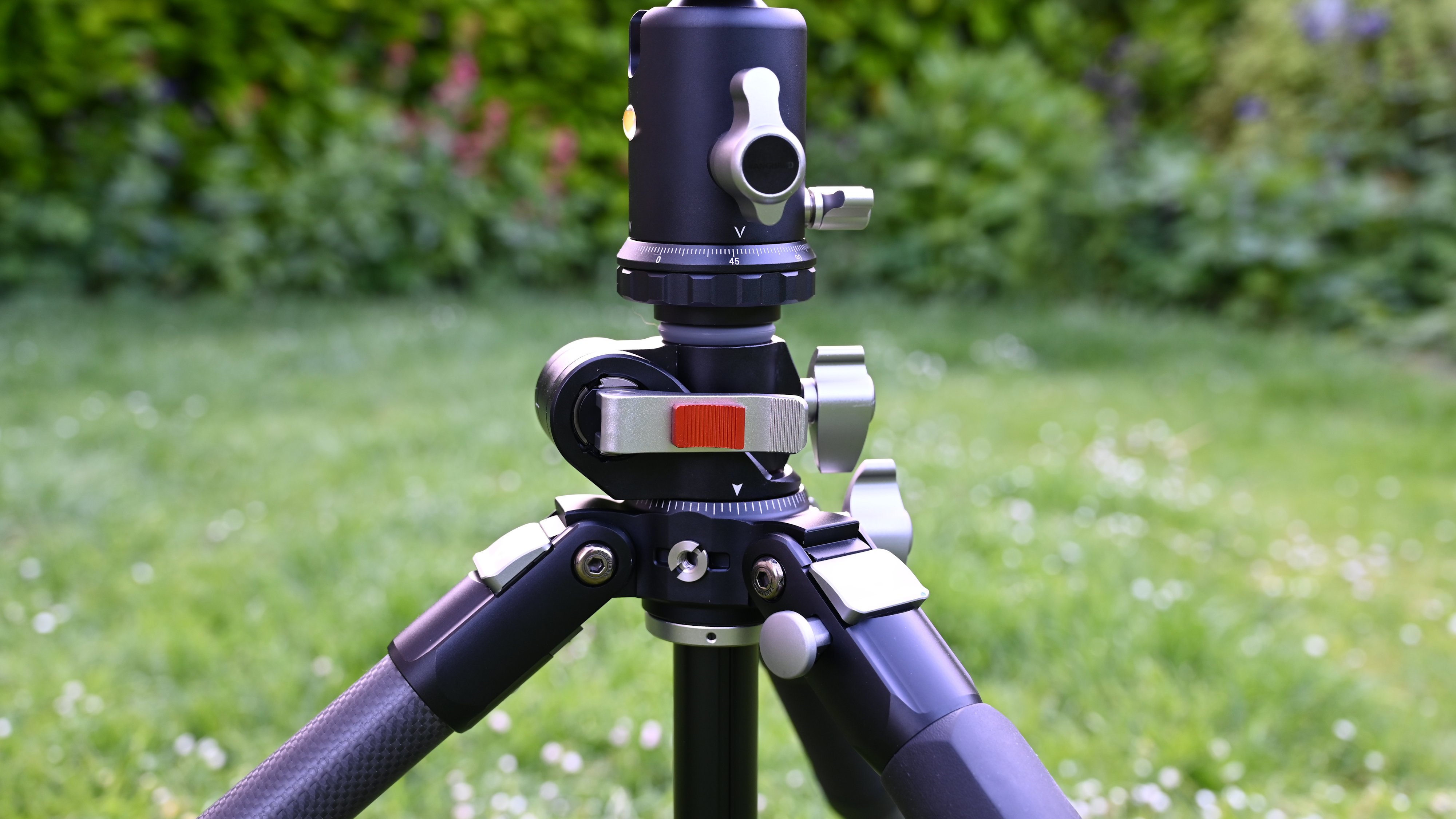
The ball head has a similarly wide range of versatility and incumbent controls. The ‘Dual Axis System’ has two separate panning options, both with their own locking knobs. The one at the base of the head enables you to pan the whole assembly, while the one at the top is for panning just the camera platform. On top of that, you get a main lock/release knob for the ball head, plus a separate friction adjustment knob. Finally, there’s a locking knob for the Arca-Swiss compatible ball head. A secondary bubble level is built into the camera platform but, as is often the case, you can barely see this with the quick-release plate fitted.

Performance
With so much versatility on offer, and so many control knobs accompanying all the features, there’s a bit of a learning curve involved with using the tripod. Even so, we found the learning curve to be shallow and short, and were fully on terms very quickly. Everything just works, and works very well indeed.

Throughout our testing, we found that the Vanguard gave rock-solid support throughout its entire operating range of heights, from really low down to the maximum height with the center column fully extended. That’s in no small part due to the generous 30mm diameter of the top leg sections, which also allows for chunky lower leg sections with diameters of 26.5mm and 23mm respectively.

Pivoting tripods are often prone to being a bit wobbly with the center column in horizontal mode but here again, the Vanguard does very well. One word of warning is that, as with any tripod with a pivoting center column, when you’re using it as a horizontal boom you need to retract the column sufficiently so that the camera doesn’t extend outwards beyond the feet, otherwise the tripod can become unstable and you risk it toppling over.
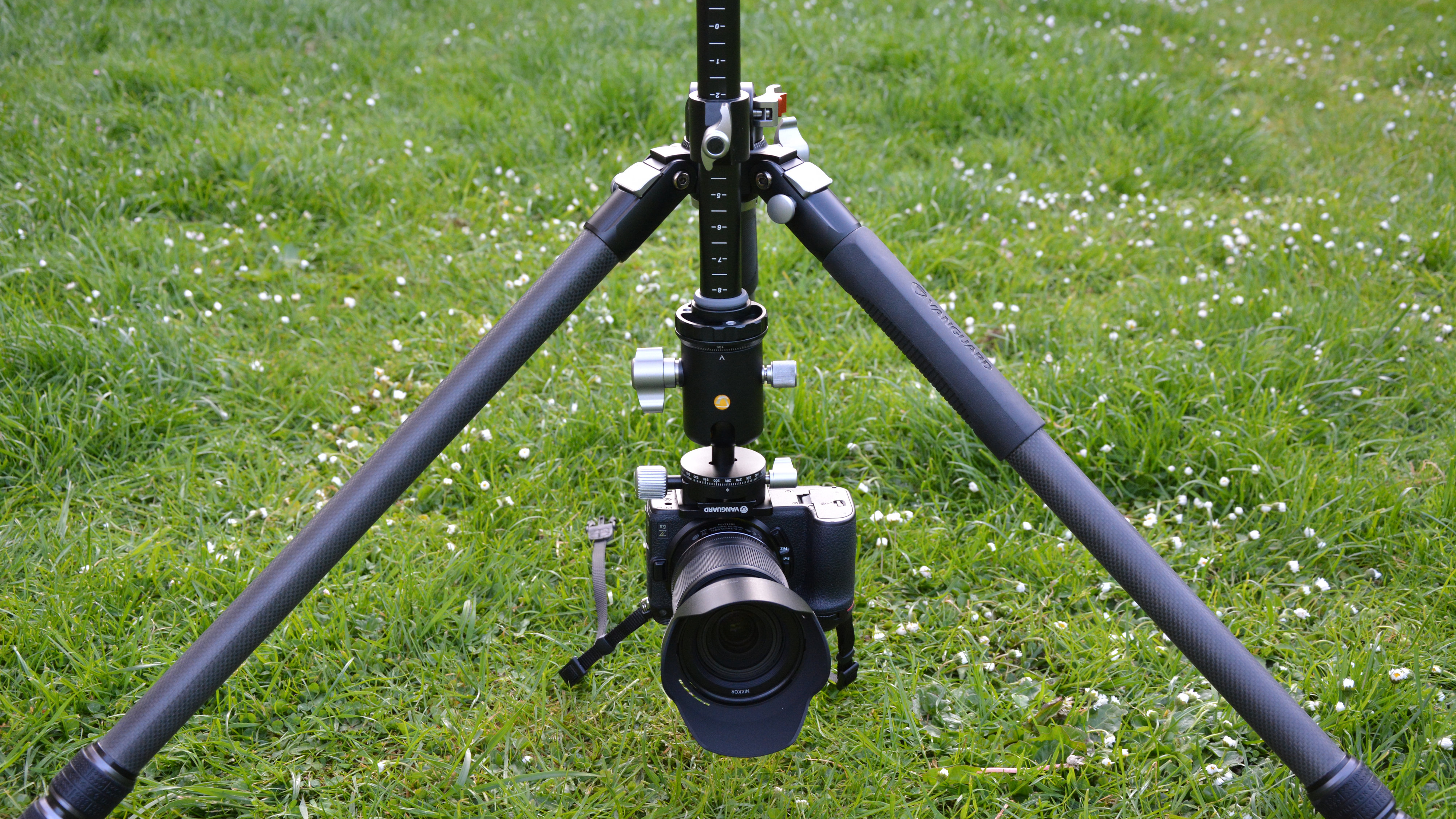
For really low-level shooting, the fact that the center column can pivot through 180 degrees enables you to shoot from right down to ground level, with the camera upside down. It’s also possible to do this in the time-honored tradition, by removing the center column, inverting it and refitting it. We wouldn’t recommend this, however, as it takes more time and effort to do, and we found that we accidentally popped out the main clamping bush for the center column when refitting it. That said, the overall performance of the kit is simply superb.
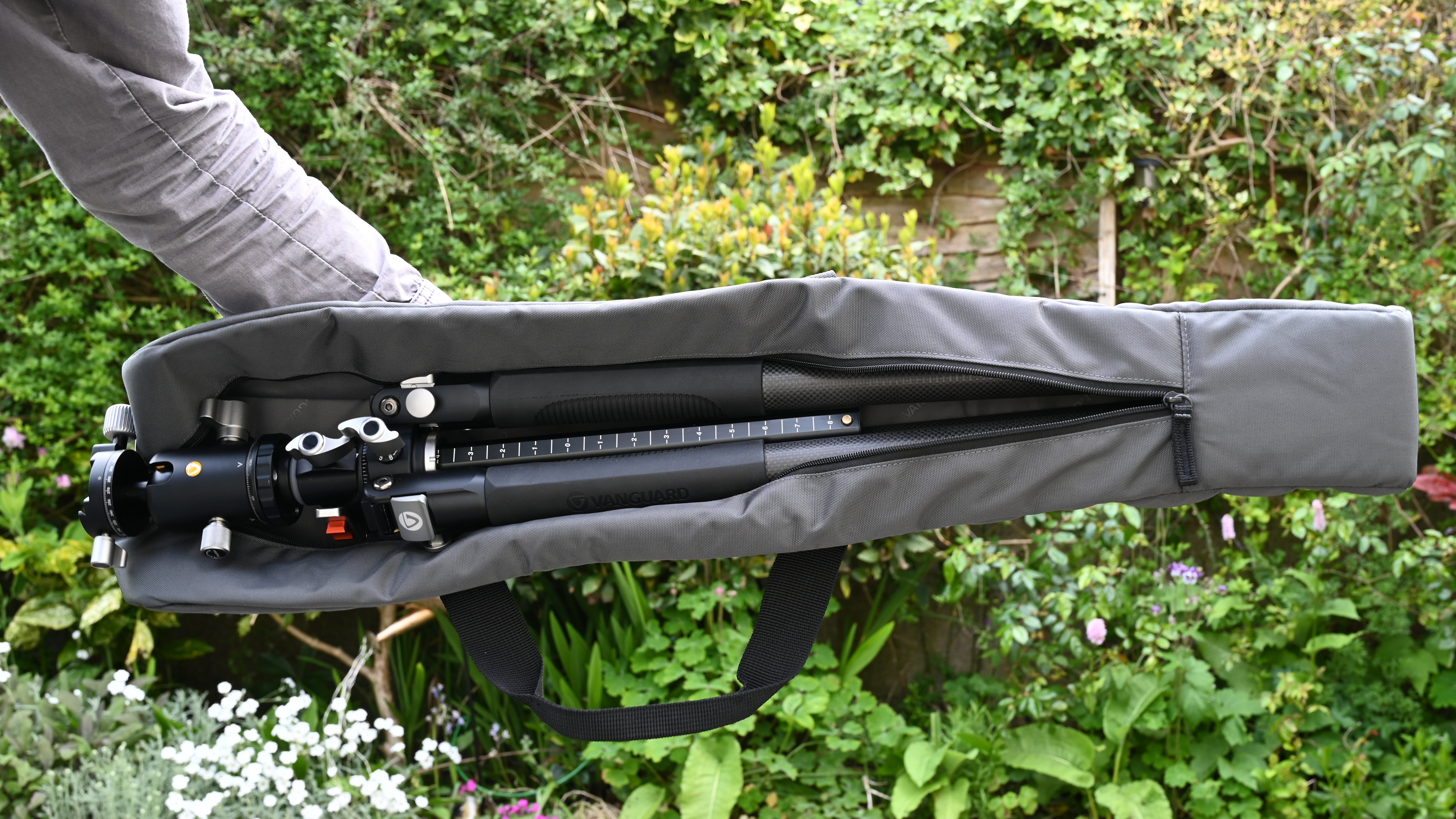
Verdict
This is a tall yet super-sturdy carbon fiber tripod kit with a clever head. As well as having a mighty 25kg load rating, it’s supremely versatile, ticking more boxes than you probably even dreamt of putting on your wish list. The pivoting center column has a full 180-degree arc of rotation, enhancing effectiveness for macro, ultra-wide-angle and extra-low-level shooting. And although it has more control knobs than most tripods have had hot dinners, it’s easy and intuitive to use. Taking all of this into account, it’s also good value at the price.
Read more:
The best travel tripod
The best video tripods
The best monopods
7 golden rules of tripod stability
Best ball heads for tripods
Best pan and tilt heads for tripods
Best gimbal heads for tripods







